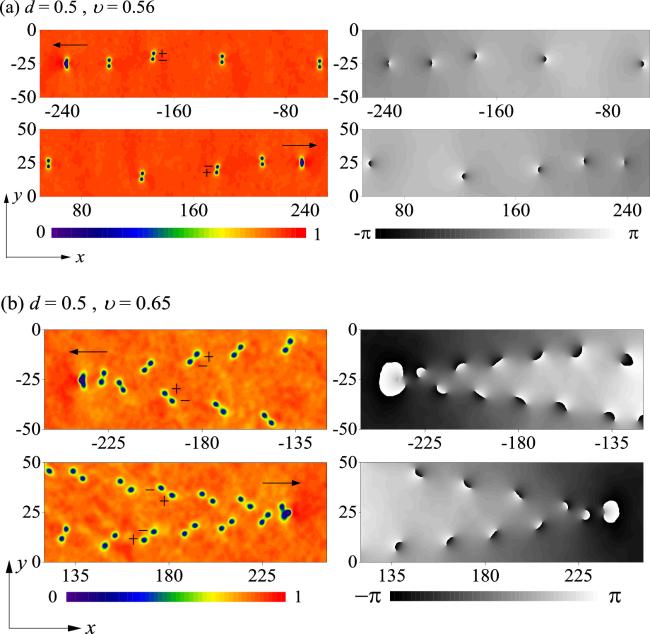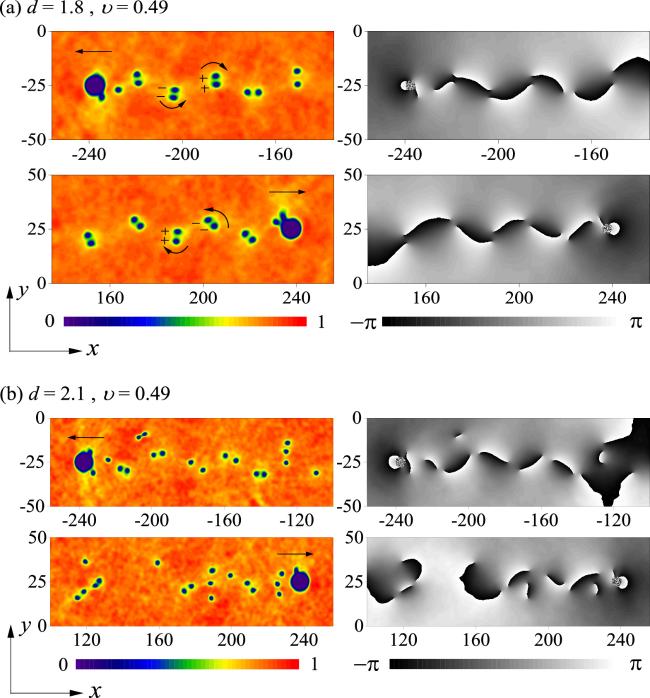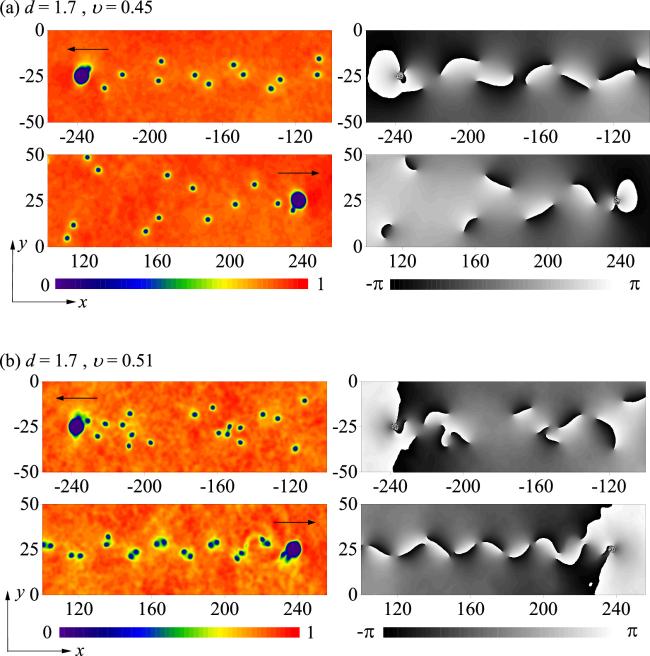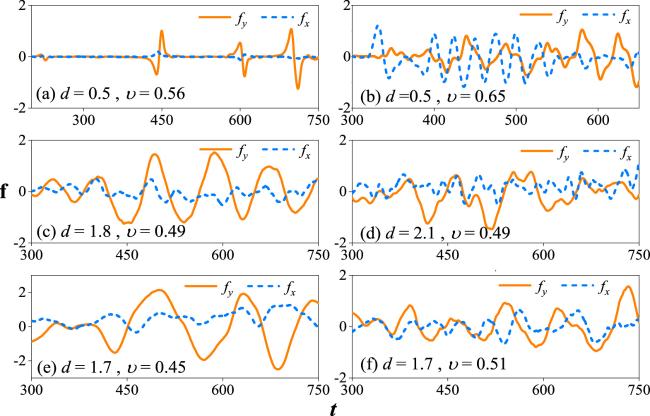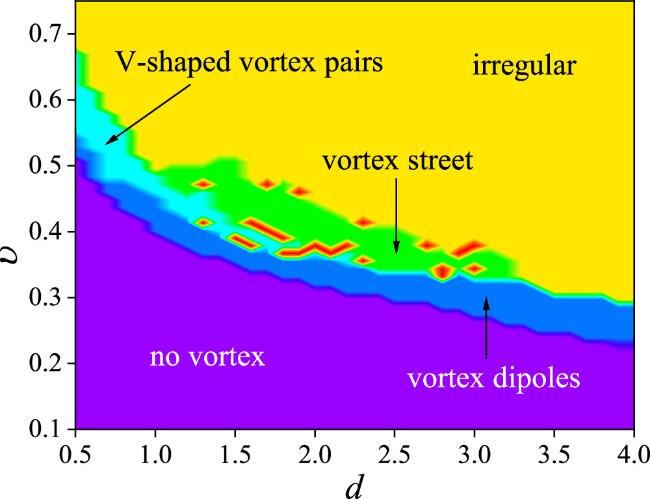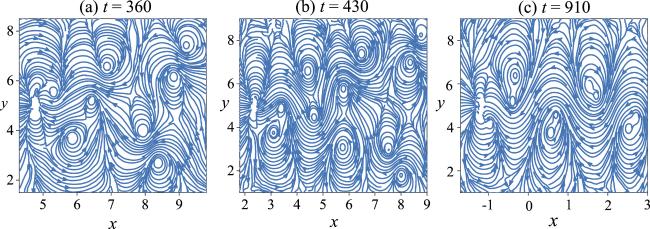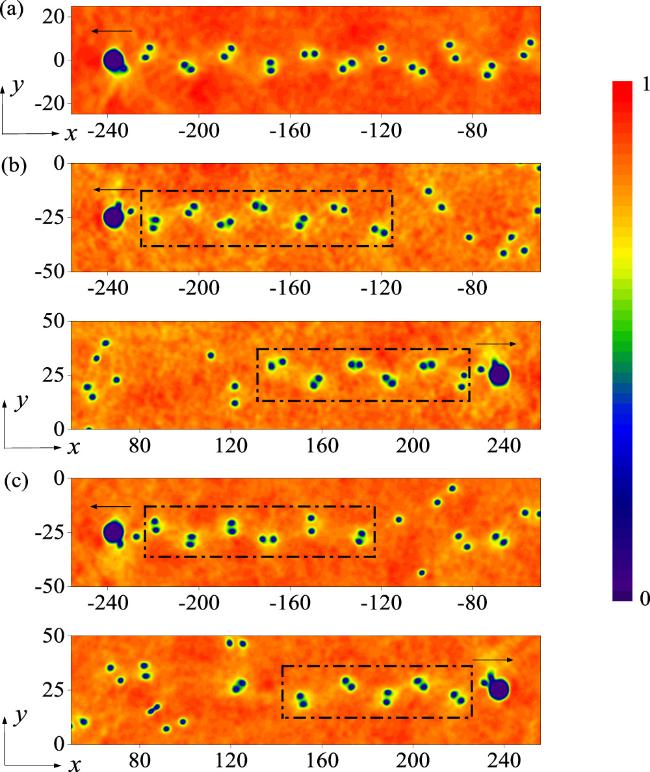The drag force experienced by the moving obstacle potential is defined as
f = (
fx,
fy) = i∂
t∫
ψ*∇
ψd
xd
y. Figure
4 indicates a normalized instantaneous drag force when the vortex is released from the obstacle. Figure
4(a) illustrates the drag force corresponding to the drifting vortex dipoles.
fx is the shedding frequency of vortices.
fy represents the frequency at which the vortex pair moves in an upward or downward direction. It is noticed that the drag force oscillates periodically and the amplitudes are not equal. As the vortex pairs behind the obstacle do not shed simultaneously, and the frequencies of the motion of the vortex pairs along the y direction are inconsistent. Figure
4(b) describes the drag force of the V-shaped vortex pairs plotted in figure
1(b). When the vortex pairs shed, the oscillating trajectory of the drag force has a certain periodicity.
fx exhibits periodic oscillations within the range of approximately 388.18 to 514.84 for
t. It indicates that the vortex pairs, which are generated by the moving obstacle potentials along both the
x direction and the −
x direction, simultaneously shed off in the same direction. Figure
4(c) corresponds to the Kármán vortex street.
fy oscillates periodically, and it is noteworthy that the amplitude of
fy tends to increase then decrease. When the shedding of vortices is irregular turbulence (see figure
2(b)), the drag force has no obvious periodicity, as shown in figure
4(d). Figures
4(e) and
(f) correspond to combined modes of the Kármán vortex street and V-shaped vortex pair (see figure
3(a)), and the Kármán vortex street and irregular turbulence (see figure
3(b)). It is found that
fy has obvious periodicity, indicating that there exists periodic shedding vortex pairs. One can observe a clear difference in the frequency and magnitude between this system and the scalar BEC lacking PT-symmetry potential.




